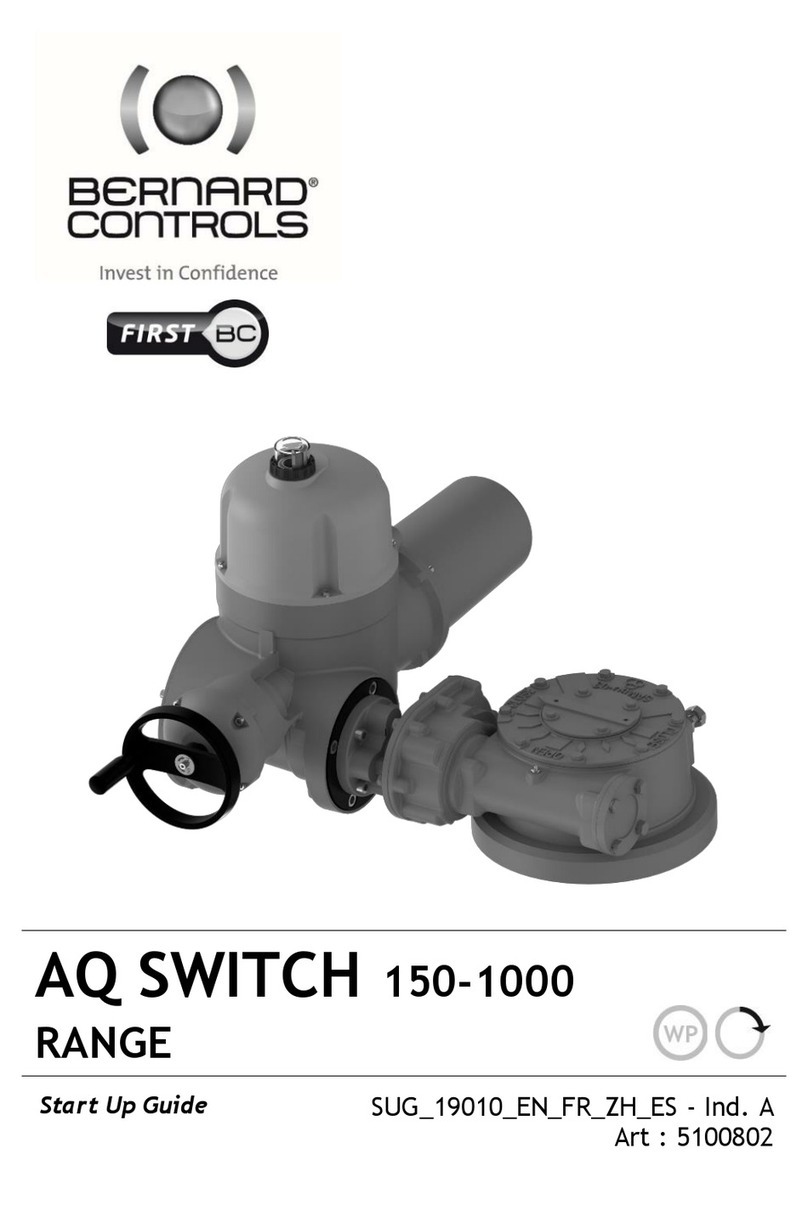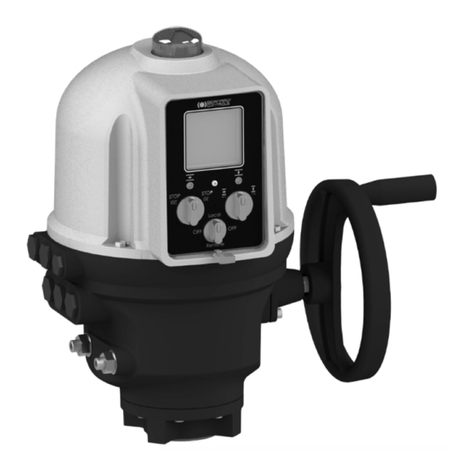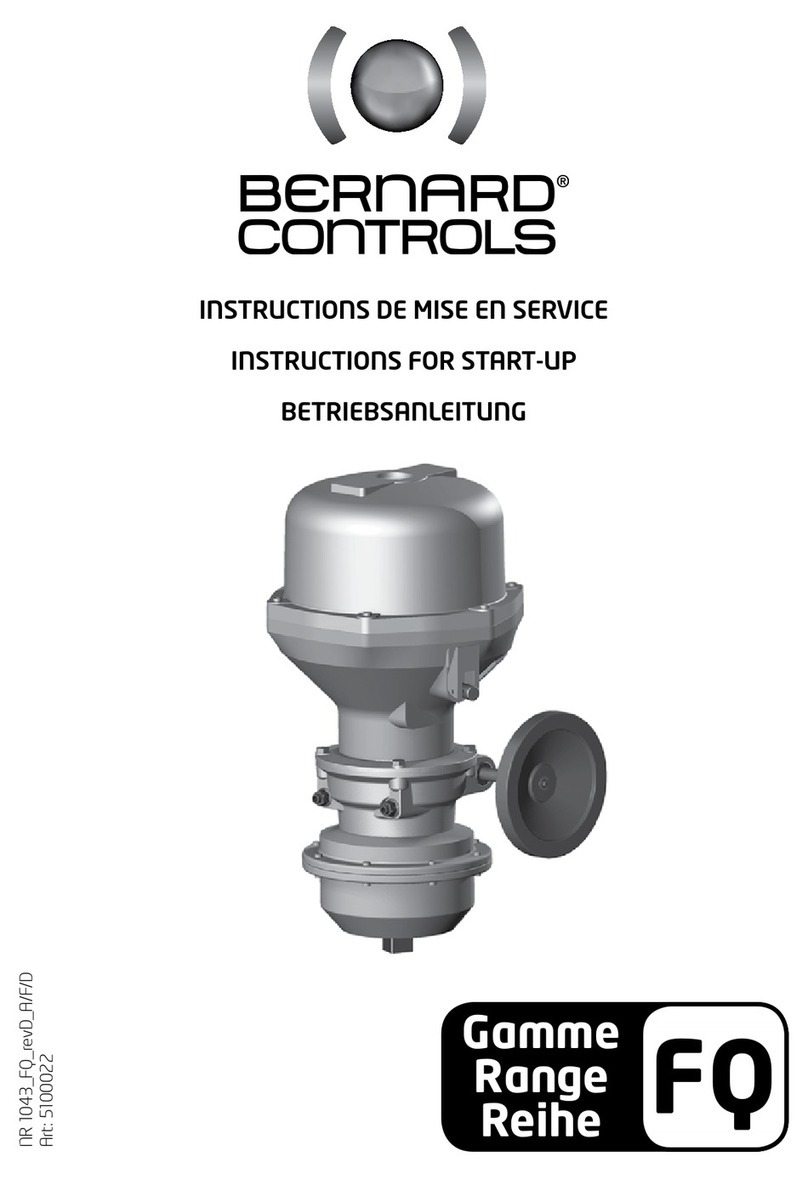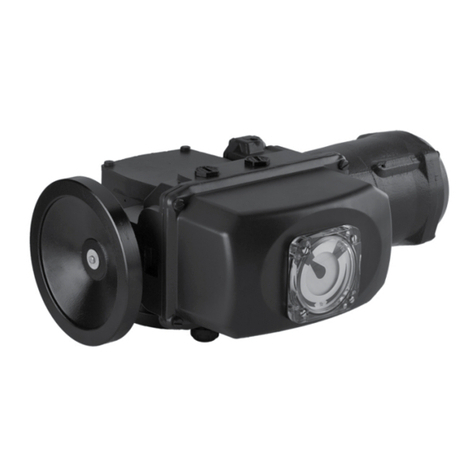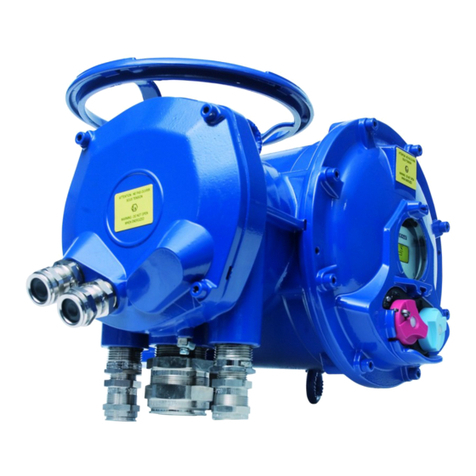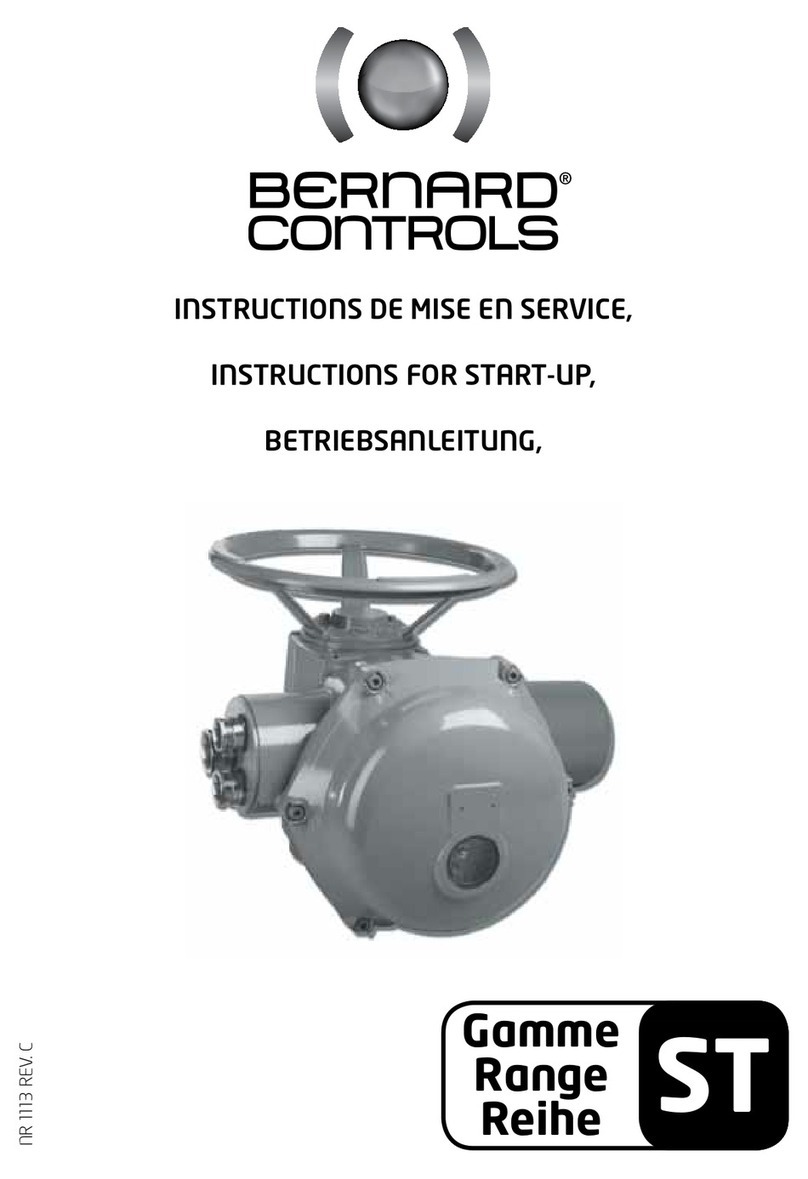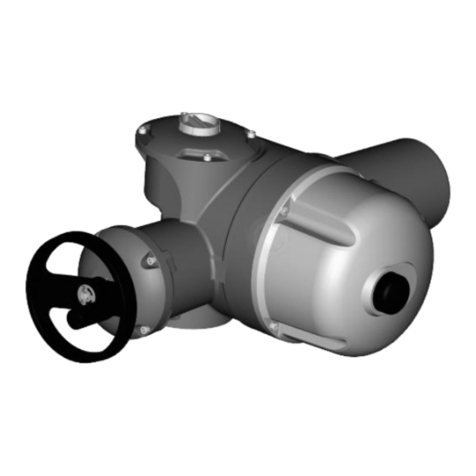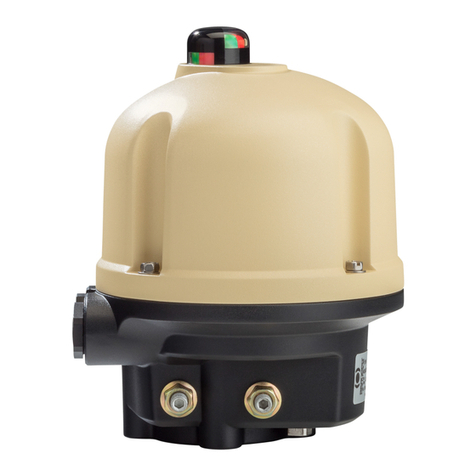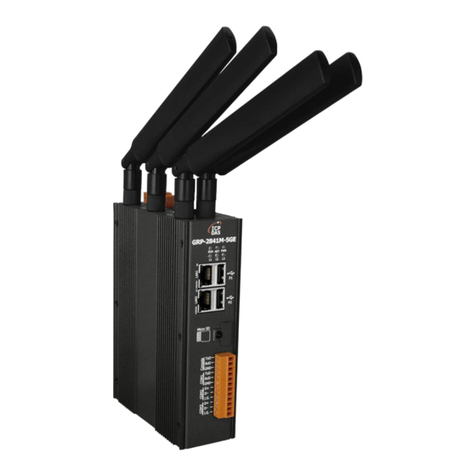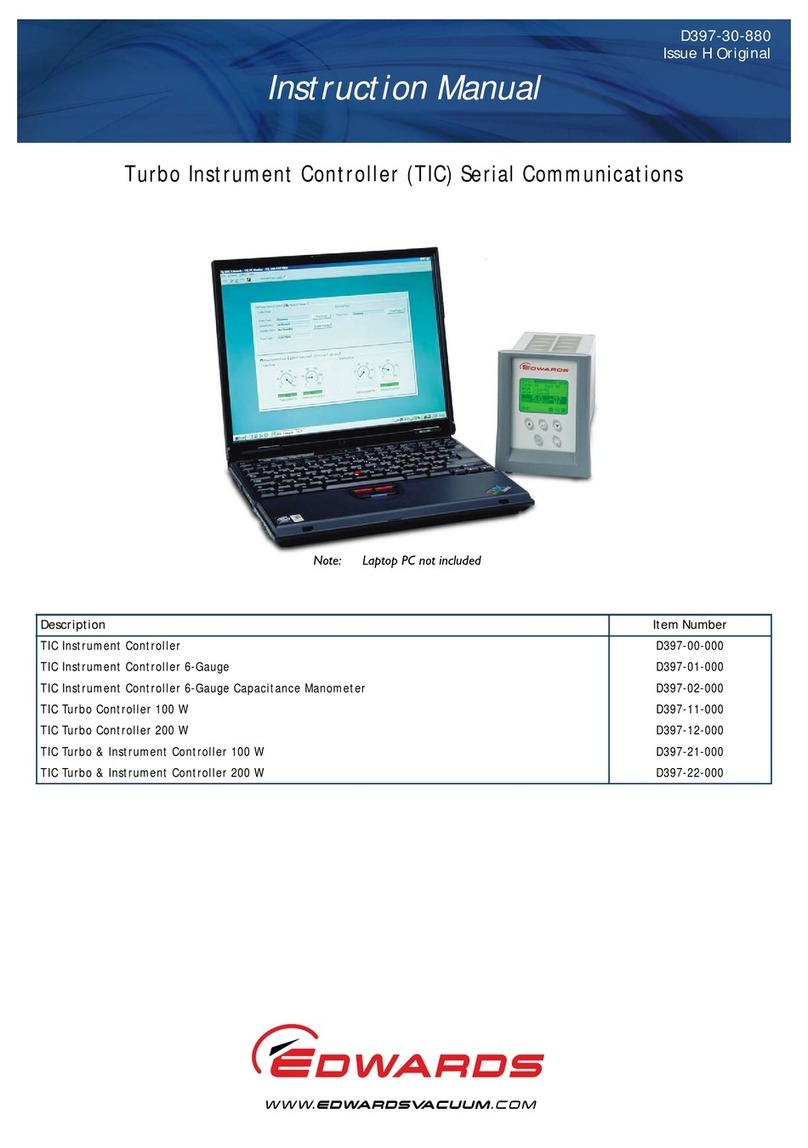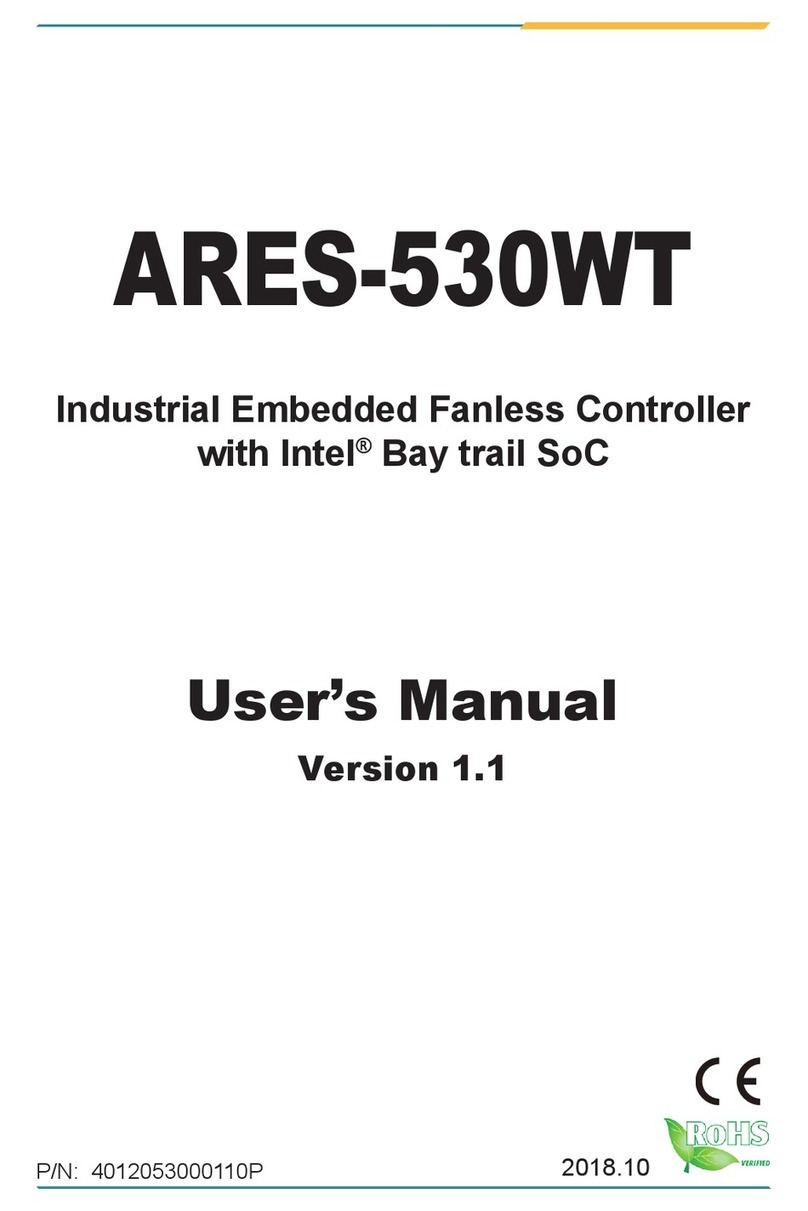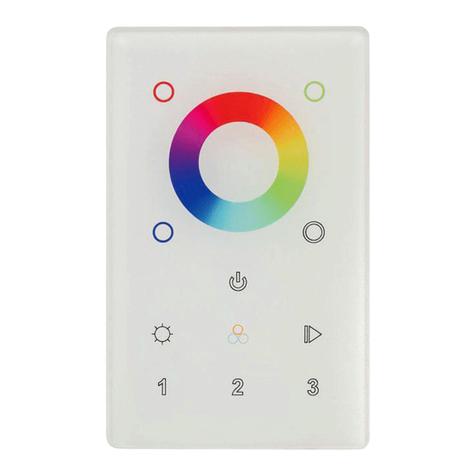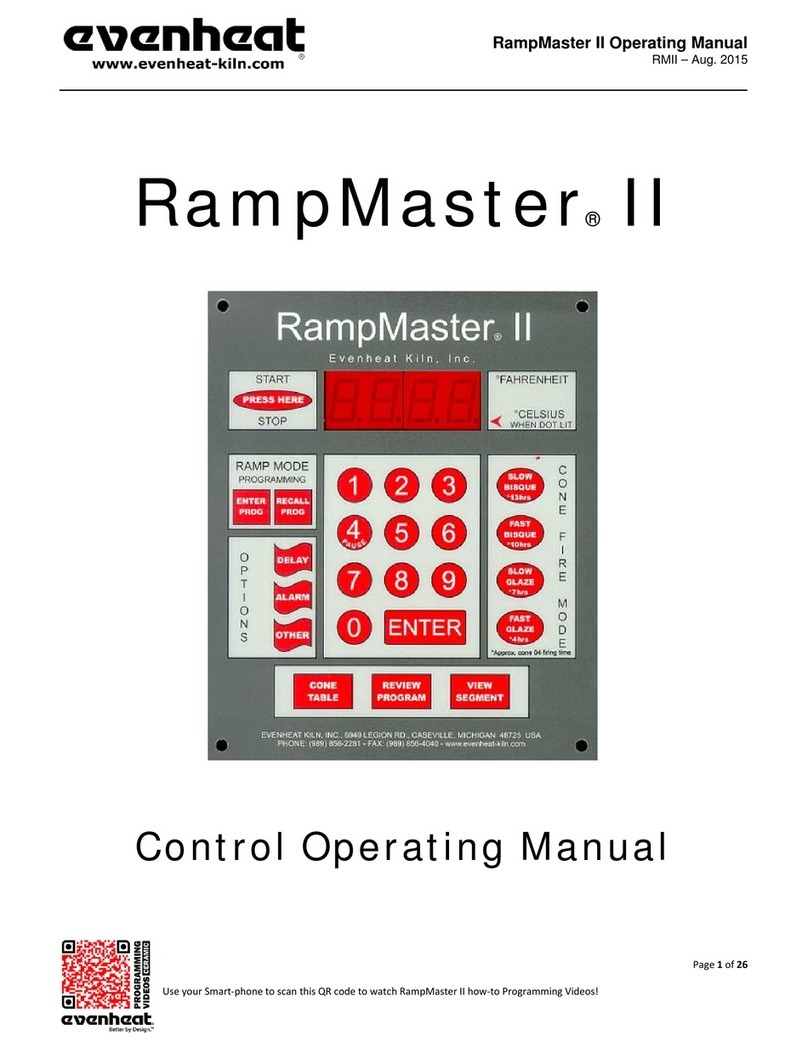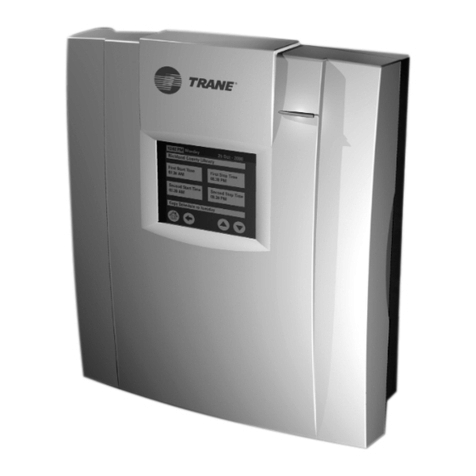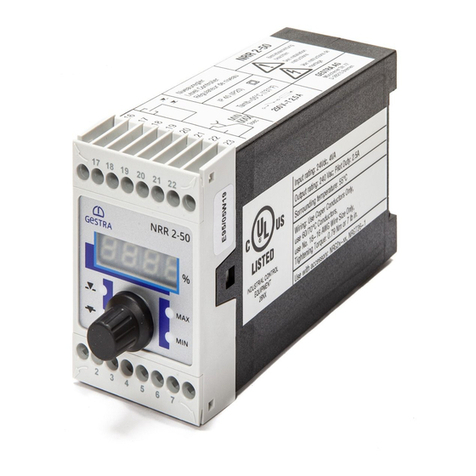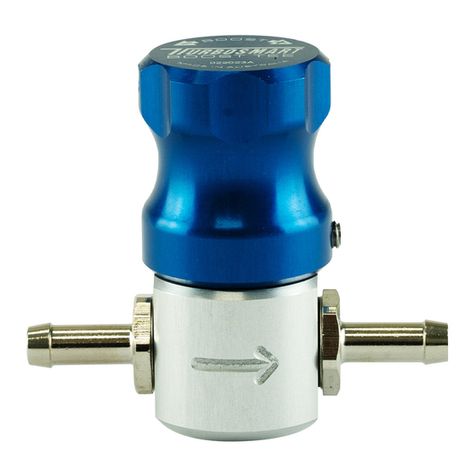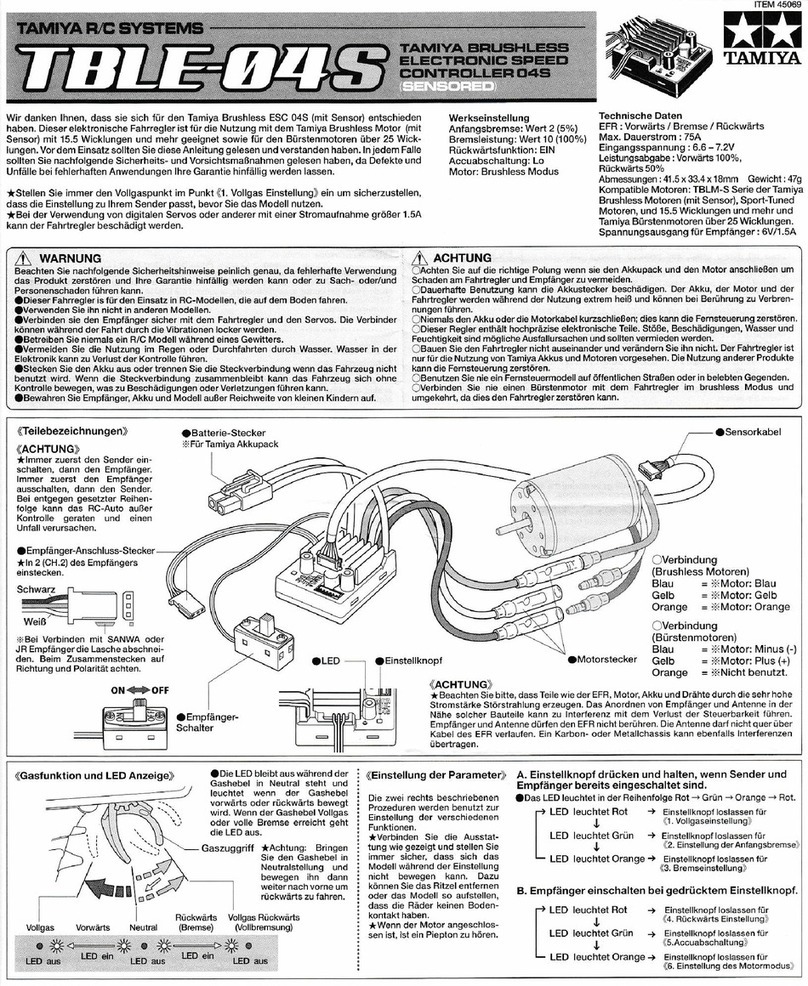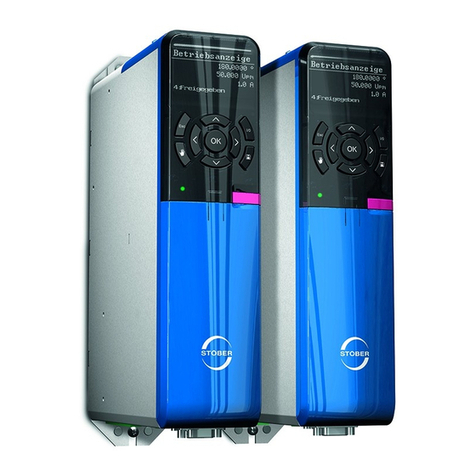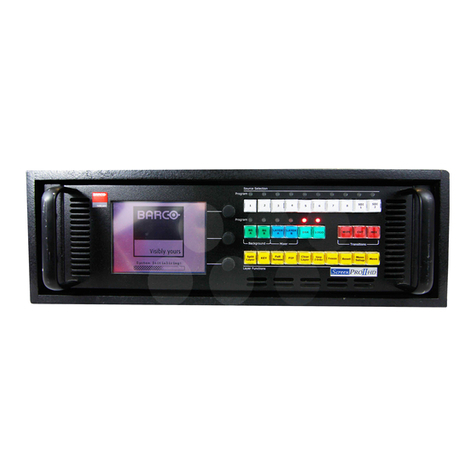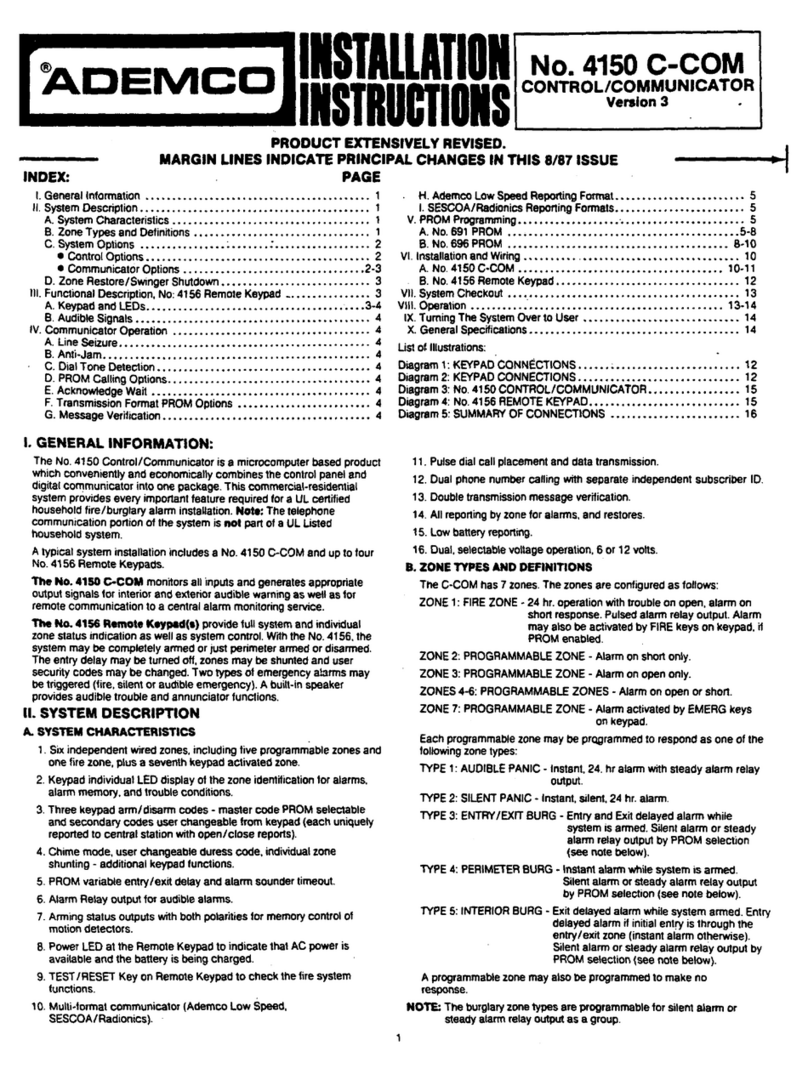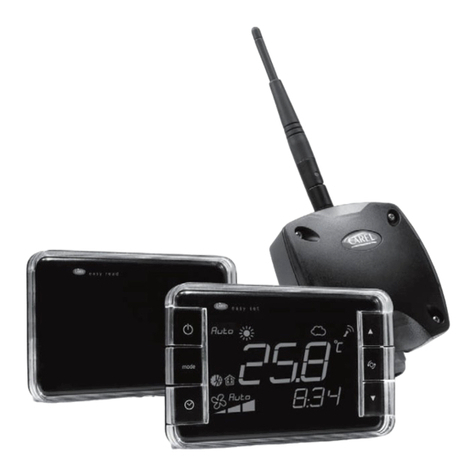
4 5
POUR UN SERVOMOTEUR TOUT OU RIEN,
VOIR DIRECTEMENT EN PARAGRAPHE 4
POUR UN SERVOMOTEUR AVEC POSITIONNEUR MINIGAM,
VOIR DIRECTEMENT EN PARAGRAPHE 5
4 Mise en service - servoMoteurs tout ou rien
4.1
raccorDeMent et tests éLectriques
Tous les fils électriques venant des différents éléments du servomo-
teur sont ramenés sur un bornier dont les bornes portent des numéros
correspondant aux schémas de câblage inclus dans ce document.
Le contact de protection thermique du moteur et les deux contacts du
limiteur de couple doivent être intégrés dans votre logique de commande
(cf. exemples de câblage) afin de limiter les risques de casse mécanique.
Une fois le câblage terminé, les points suivants doivent être contrôlés :
a) A partir des informations gravées sur la plaque d’identification du servomoteur, vérifier que
l’alimentation électrique utilisée est correcte,
b) Vérifier que les presse-étoupe ont bien été resserrés après câblage,
c) A l’aide de la commande manuelle, amener la vanne en position médiane
d) Actionner la commande électrique d’ouverture. Vérifier que le sens de rotation du servomoteur
est correct. Actionner manuellement le contact de fin de course «OPEN» (ouvert) ; le moteur doit
s’arrêter.Vérifier de la même manière la commande électrique de fermeture et le contact de fin
de course «CLOSED» (fermé).
e) Tous modèles sauf EZ4 à EZ15 : Actionner la commande électrique d’ouverture. Actionner le
contact du limiteur d’effort «OPEN» ; le moteur doit s’arrêter. Vérifier de la même manière le
contact du limiteur d’effort «CLOSED» pendant une manoeuvre de fermeture.
En cas de problème sur un de ces tests, vérifier l’ensemble du cablâge. Pour les servomoteurs d’un
couple supérieur à 300 Nm, après avoir vérifié le sens de rotation, il est préférable d’alimenter
seulement le circuit de contrôle, sans alimenter le circuit de puissance, afin de contrôler le
branchement en toute sécurité.
4.2 RÉGLAGE DES BUTÉES MECANIQUES
ET DES CONTACTS DE FIN DE COURSE
Description et fonction des butées mécaniques
Ce dispositif limite mécaniquement la course lors de la commande manuelle
de la vanne et de ce fait évite tout déréglage. Suivant les cas, les butées
sont localisées sur le servomoteur ou sur le réducteur 1/4 Tour.
Les servomoteurs sont réglés dans nos usines pour une rotation de
90°. Un réglage est possible grâce aux vis d’arrêt dans la limite de 2°
à chaque extrémité.
Description et fonction du bloc à cames et des contacts de fin de course
Les cames actionnant les micro-contacts forment un ensemble monobloc dont les éléments peuvent
être réglés indépendamment les uns des autres.
Les cames blanche et noire actionnent les contacts de fin de course.
Les autres cames beige et grise actionnent les contacts additionnels (Signalisation par exemple).
Les cames se manoeuvrent de la façon suivante :
a) Introduire un petit tournevis dans la fente entourée d’une bague de la même couleur que
la came à déplacer,
b) Appuyer légèrement pour libérer la came,
c) Tourner indifféremment dans un sens ou dans l’autre pour amener la came dans la position
recherchée,
d) Relâcher la pression en s’assurant que la tête est remontée en position d’origine, ce qui
verrouille automatiquement la came.
Mode opératoire de réglage des butées mécaniques et du bloc à cames :
a) Desserrer les deux butées mécaniques de 2 tours.
b) Amener la vanne en position fermée. Si l’on arrive en butée
mécanique avant d’avoir atteint la fermeture complète de la vanne,
cela signifie que la tolérance de réglage de 2° maximum a été
dépassée ; ne pas tenter de passer outre cette limite.
c) Régler la position de la came du contact de fin de course «CLOSED».
d) Revisser la butée jusqu’au contact et la desserrer d’un tour et demi ;
puis bloquer la vis de la butée avec le contre-écrou.
Respecter la même procédure pour l’ouverture.
Effectuer une fermeture et une ouverture complète avec la commande
électrique.
Il est impératif que l’arrêt du moteur sur fin de course électrique
intervienne avant l’arrivée en butée mécanique.
4.3 potentioMètre De recopie De position (option)
Le système de recopie de position est constitué d’un potentiomètre
entraîné par le bloc cames des fins de course. Le 0% correspond à une
vanne fermée. Le 100% à une vanne ouverte.
Version sur circuit imprimé (Modèles EZ25 à EZ1000)
Pour monter l’ensemble potentiomètre sur la platine du servomoteur,
emboîtez-le sans l’indicateur de position et vissez-le sur la colonette
de maintien. Revissez l’indicateur de position.
Le réglage du zéro du potentiomètre s’effectue à l’aide de la vis
repérée «0% position».
Mettre le servomoteur en position fermée.
La mesure de résistance s’effectuera entre les bornes 16 et 17.
Tout en maintenant manuellement en position la pignonnerie
située juste sous la plaque marquée «0% position», tourner la vis du
potentiomètre jusqu’à obtenir une valeur de résistance qui dépasse
0 Ohm et augmente régulièrement puis tourner en sens inverse afin de
revenir à une valeur proche de 0 Ohm.
Mettre le servomoteur en position ouverte et noter la valeur de résis-
tance pour le 100%. Revenir en position fermée et vérifier que la valeur
du 0% est bien répétable et proche de 0 Ohm.




















